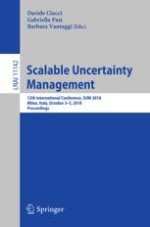2018 | OriginalPaper | Buchkapitel
Imprecise Sampling Models for Modelling Unobserved Heterogeneity? Basic Ideas of a Credal Likelihood Concept
verfasst von : Thomas Augustin
Erschienen in: Scalable Uncertainty Management
Aktivieren Sie unsere intelligente Suche, um passende Fachinhalte oder Patente zu finden.
Wählen Sie Textabschnitte aus um mit Künstlicher Intelligenz passenden Patente zu finden. powered by
Markieren Sie Textabschnitte, um KI-gestützt weitere passende Inhalte zu finden. powered by
